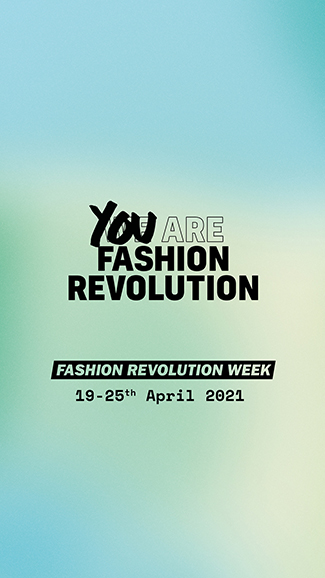consent_cookie
Duración: 1 year
Stores the user's cookie consent state
19-04-2021
The week of April 19, Fashion Revolution Week is celebrated around the world, reflecting a movement that emerged after the drama at the Rana Plaza Hotel in Bangladesh, in 2013, in which more than 1,000 people died. This year, the motto is human rights. Again, this is a great time to reflect on fashion and repurposing.
Currently there are countless organizations and companies that are trying to revolutionize the sector and are incorporating more sustainable practices in production or implementing different business models, mainly based on reuse (upcycling, rental of garments, secondhand, etc.).
In parallel, the big brands have embraced the concept and vocabulary of sustainable fashion, in order to improve their marketing strategies. Many brands are adding terms such as 'eco', 'organic' or 'recycled' to part of their garments or collections, adding at the same time other factors of environmental sustainability such as the reduction of water and energy consumption, the reduction of their footprint of carbon and the use of recycled yarns and textiles.
Without forgetting plastic, of course, plastic, the quintessential anti-ecological devil: for this reason it is becoming essential to add a product line made with recycled plastic and to try to minimize the use of single-use materials.
A more responsible consumption, the key
But the key remains a more rational production in line with a more responsible consumption. The consumer accumulates great power and an enormous capacity to improve the system with their daily decisions: what to buy, why to buy it, what environmental and social impact what they buy has.
The current model is not sustainable, the numbers are irrefutable. The green and circular models, which generate a positive social impact, are the truly useful and essential in this scenario.
And that is where the secondhand fashion, reuse, undoubtedly influences. It seems clear that the most sustainable item - be it clothing or any other - is the one already manufactured. The 'close the loop' necessarily involves recycling, of course, but also the drive for reuse.
It has been said on many occasions that the second-hand market is a patch and not a solution to the challenge of sustainability in fashion. It's certainly not the solution, but no matter how hard a transition to a 100% circular fashion is worked, the secondhand will still be necessary. Indispensable. The only reason: consumerism.
It is indisputable: we buy clothes beyond our possibilities and, above all, and much more serious and dangerous, of those on the planet. Therefore, as much as fashion moves slowly but hopefully inexorably towards circularity, the secondhand will be necessary.
Because without second hand, there is no complete revolution possible in the field of fashion.

